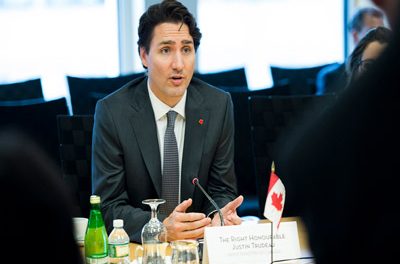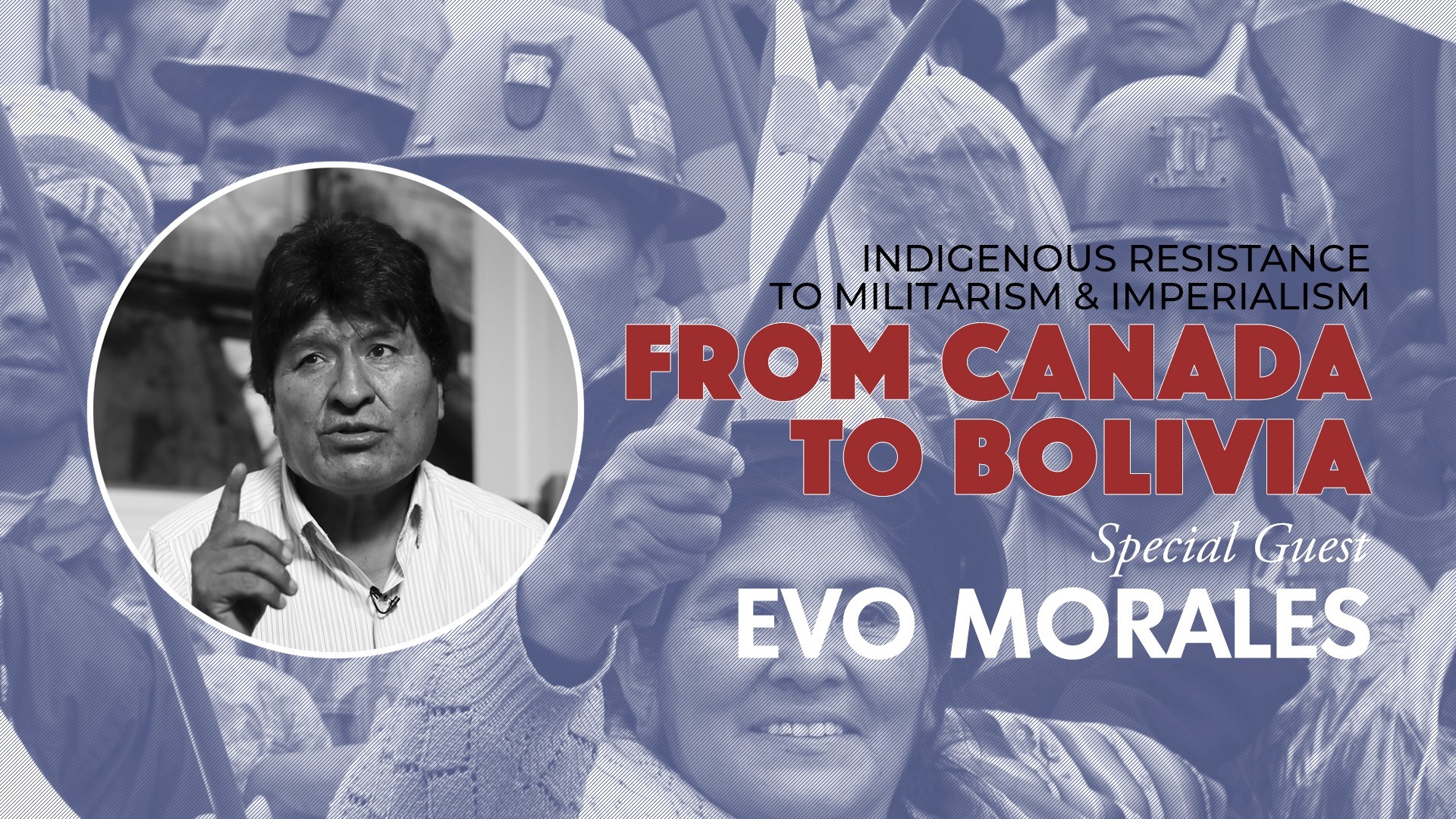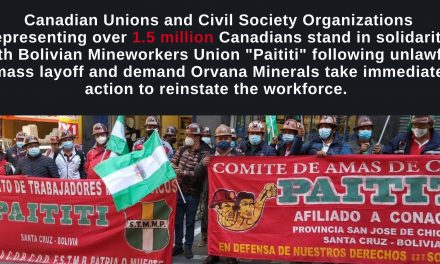Published by Brasil Wire
Buried under a global pandemic is the most important Brazil story for decades. Unless the role of the United States in Brazil’s democratic collapse is acknowledged and understood, no useful sense can be made of its present, or its future, and no honest appraisal can be made of bipartisan U.S. foreign policy in Latin America.
Brazil’s recent history is one of national sabotage, of international collusion, and of a fifth column, fighting an unconventional war, behind an institutional smokescreen. It is a story of an independent, sovereign country, transformed almost silently into a satellite of the United States.
The result of leaked conversations from “anti-corruption purge” Operation Lava Jato or Car Wash, published by the Intercept, has been to expose its centrality to each phase of the slow coup which ended Dilma Rousseff’s presidency, and brought to a close twenty years of unprecedented progress and stability in Brazil.
Left in Lava Jato’s wake are a chaotic, extreme-right kakistocracy under Jair Bolsonaro, and Brazil’s international reputation in tatters.
Rousseff recently remarked that just a decade ago, a period when her country’s GDP overtook the United Kingdom’s, “…Brazil manufactured aircraft, ships and oil platforms. Today it cannot manufacture disposable masks”.
On March 12 2020, nine months after the original leaks, the Intercept finally published further conversations revealing how United States Department of Justice was illegally involved in Operation Lava Jato from the very beginning, operating in secret – at the behest of the U.S. agents – and deliberately bypassing the Brazilian Government. The importance of this cannot be overstated.
Context: After his retirement, two time head of Western Hemisphere Affairs, and Ambassador to Brazil from 2009-2013, Tom Shannon Jr, remarked that the Lula and Dilma Governments had been an obstacle to United States plans for Latin America. Lula’s 2005 rejection of the Free Trade Area of the Americas (FTAA), Brazil’s leadership on projects for regional integration, and its protagonism within the BRICS grouping, had bothered the Bush and then Obama administrations under which Shannon served.
Operation Lava Jato, and not the bogeyman of corruption it was supposed to eradicate, bears principal responsibility for Brazil’s current plight. The damage done will take a generation or more to heal. Thus the U.S. Government’s documented role in it, and the resulting capitulation of the world’s sixth most populous nation, should be the most important Latin American story of our times. Yet there has been little honest mainstream repercussion.
Lawfare, the US-led “War on Corruption” in Latin America, and specifically DoJ involvement in Lava Jato, are topics that Brazilian independent media and ourselves have reported extensively for years. For the most part this was based on analysis of information in the public domain, with over 100 articles published on the subject. We were not clairvoyant, we simply knew where to look, and we were not afraid of any potential professional repercussions from investigating this subject.
These stories were met by a wall of silence from international corporate media, through to high profile progressive publications.
Six years since its initiation, Operation Lava Jato is now disgraced, itself exposed for the very corruption it was pursuing. The full ramifications of the latest expose, however, have yet to be acknowledged, especially by those whose reputations would suffer most, were they ever to be.
The fog of war
There is six years worth of lingering fog to negotiate when attempting to appraise Lava Jato, especially in the English language. Its promotion internationally, by organisations such as Council of the Americas, Atlantic Council, American Enterprise Institute, Wilson Center, and Transparency International, was unusual, as was the deification of Sérgio Moro – a mediocre regional judge who was elevated to international hero status by the likes of Time Magazine. Lava Jato was depicted as an essential stage in Brazil’s development, which would propel it to an efficient, corruption-free future.
This apparent public relations campaign for Lava Jato has left behind a persistent layer of what professor Kathy Swart calls “fossilised propaganda” on the record of Brazil’s modern history. With no acknowledgement or analysis of more recent revelations from papers of record such as the New York Times and Guardian, it is unclear how this distortion can ever be corrected. Silent complicity was as strong a feature of regime change narrative building as overt untruth. What little mainstream pushback there was only came after it was already too late. Even Petra Costa’s Academy Award nominated documentary “Edge of Democracy”, despite its international acclaim, did not succeed in making corporate journalists and commentariat acknowledge mistakes they had made during the parliamentary coup against Dilma Rousseff and politically motivated prosecution of Luiz Inácio Lula da Silva. Costa herself said that if she had known of what would be revealed about Operation Lava Jato, she would’ve delayed release of the film to include it.
Contrary to what some of its most enthusiastic proponents have since tried to argue, Lava Jato did not “lose its way” or “overreach”. It was from its inception both a political, and a geopolitical weapon, and it achieved what it was created to do, working hand in hand with U.S. Government and corporate interests, Brazil’s military and its elites.
Just as revelations of extensive U.S. spying on Dilma Rousseff’s Government were coming to light, during the June 2013 protests, a social media campaign emerged to block the approval of a constitutional amendment called PEC37, which was supported by the Brazilian Order of Attorneys, but depicted as protection for the corrupt. The amendment would have prevented public prosecutors from being able to lead their own investigations, theoretically making future abuses by Lava Jato impossible. Just weeks later, under pressure from the streets and the media to prove her Government’s commitment to anti-corruption, Rousseff would sign off on a law allowing plea bargain testimony as evidence, effectively giving birth to Lava Jato in March 2014. Following an attempt to swing the 2014 election with a story leaked to Veja magazine on the eve of the vote, we then watched the economic sabotage of 2015, as Sérgio Moro mandated the shutdown of Brazil’s civil engineering sector. This segued into Lava Jato’s centrality to the campaign for Dilma’s impeachment, ironically given additional justification through economic damage that the anti-corruption operation itself had caused. From there we see Lava Jato acting behind the scenes to block the appointment of Lula as Rousseff’s Chief of Staff, which could have theoretically averted her impeachment. By late 2016, with Rousseff gone, Lava Jato’s attention turned to Lula’s arrest and imprisonment – now proven to have been designed to prevent his return to the Presidency at the 2018 Election, where he led polls by a commanding margin.
Lava Jato and its protagonists were central to this sequence of events, and the U.S. Department of Justice was pulling strings from within.
The sabotage of Lula’s candidacy required intervention by head of the Armed Forces, General Villas Boas, with a veiled, televised threat, which swung the Supreme Court away from granting Lula habeas corpus by a single vote. As a result, former Military Captain Jair Bolsonaro was elected president, and Lava Jato Judge Sérgio Moro, who put him there, was appointed his Justice and Security Minister.
Supreme Court Minister “Toffoli described a dark scenario,” write journalists Felipe Recondo and Luiz Weber in their book ‘The Eleven’ about what was going on behind the scenes at the 2018 election. Toffoli recalled that Villas Bôas, had “300,000 armed men who mostly supported Jair Bolsonaro’s candidacy.”
Eduardo Costa Pinto of the Federal University of Rio de Janeiro (UFRJ), says that the Army paved the way for Bolsonaro’s victory, “by blocking the Supreme Court. And that the conductor of the coup was Villas Bôas.” Costa Pinto notes that by bringing in Azevedo e Silva as Minister of Defense, Bolsonaro was rewarding those involved. “Thank you, Commander Villas Bôas. What we have talked about will die between us. You are responsible for me being here.” the newly elected President said. At a ceremony to mark his retirement, Villas Bôas, by then seriously ill and confined to a wheelchair, told Bolsonaro: “You bring the necessary renewal and release of the ideological bonds which hijacked free thinking.”
Project Bridges
Sérgio Moro infamously appears in a leaked U.S. State Department cable dated 30th October 2009, in which there are evident seeds of what would become Operation Lava Jato some years later. When it was first discovered, during the onset of Lava Jato’s positive publicity, some foreign commentators attempted to dismiss the cable’s relevance. Over time, as more information about DoJ involvement in Lava Jato came to light, the clearer its significance became.
It describes an October 2009 regional conference in Rio de Janeiro entitled “Illicit Financial Crimes” which “successfully brought together representatives from Brazil’s federal and state law enforcement community and countries from throughout Latin America.”. It reveals institutional and interpersonal meddling by the US Government in Brazil’s legal system.
The cable, signed by the Bureau of Western Hemisphere affairs’ Lisa Kubiske, reads: “PROJETO PONTES: BUILDING BRIDGES TO BRAZILIAN LAW ENFORCEMENT: Post recently concluded a successful conference on Illicit Finance Oct 4-9 (reftel), held in the regional capital of Rio de Janeiro and funded by State’s Coordinator for Counter Terrorism (S/CT).”
“This is the first regional conference conducted under post’s Projeto PONTES (Translation: Bridges Project) umbrella, a new training concept post introduced in February 2009 to consolidate bi-lateral law enforcement training. Training conducted under Projeto PONTES is unique in several ways: presentations focus on both Brazilian and U.S. best practices; the participants include, in the same venue, judges, prosecutors, and law enforcement; the topics are agreed upon by both Brazilian and U.S. counterparts; and the presentations are geared towards practical skills, not theory.”. Kubiske’s emphasis on the convergence of “judges, prosecutors and law enforcement” is particularly relevant to Lava Jato, and this inherent conflict of interest was a dominant feature of its fall from grace.
Kubiske goes on to explain that the U.S. Embassy’s Resident Legal Advisor (RLA) and FBI Legal Attaché (LEGAT) “closely followed the Projeto PONTES framework when developing the conference agenda and the list of participants. Federal judges and prosecutors from each of Brazil’s 26 states and federal district took part, and over 50 federal police agents (from throughout Brazil) participated.”. Such attention to detail regarding the conference participants suggests deep penetrative knowledge of Brazil’s judiciary.
Supreme Court Judge Gilson Dipp, whom Epoca magazine named among 2009’s 100 most influential people, “provided an overview of the legislative and political history of Brazil’s money laundering and illicit activity legislation.”
Then along comes Moro, an unremarkable regional judge from Curitiba, Paraná, yet whom already had a reputation preceding him as a national hero who would destroy the Workers Party: “Brazilian Federal Money Laundering Judge Sergio Moro then discussed the 15 most common issues he sees in money laundering cases in the Brazilian Courts. U.S. presenters discussed various aspects regarding the investigation and prosecution of illicit finance and money laundering cases, including formal and informal international cooperation, asset forfeiture, methods of proof, pyramid schemes, plea bargaining, use of direct examination as a tool, and suggestions on how to deal with Non-Governmental Organizations (NGO’s) suspected of being used for illicit financing.”
Kubiske describes mock courtroom interrogations, and “suggestions from the Brazilians on how to work better with the U.S.”.
Under the heading ‘RESULTS: PRACTICAL TECHNIQUES USEFUL’, Kubiske explains the adoption of U.S. DoJ standards in Brazilian cases: “The participants praised the hands on training, and requested additional training on the collection of evidence, interrogation and interviewing, court room skills, and the task force model.”
“The participants also lauded the quality of the presentations and singled out the mock direct examination of a witness as a high point in the conference. They emphasized the importance of discussing practical investigative and trial techniques, and the demonstration of concrete examples of cooperation between law enforcement and prosecutors.”, “The Brazilians explained that Brazil’s democracy is barely 20 years old; therefore, Brazilian federal judges, prosecutors, and law enforcement are new to the democratic process and have not been trained in the basics of long term investigations, proactive task forces, and the successful use of courtroom advocacy.”
Kubiske then reveals U.S. Government consultants actually guiding changes to Brazil’s legal system, of the type that would be enacted four years later, namely the acceptance of “mafia style” plea bargain testimony, which enabled Operation Lava Jato: “Finally, many commented that they wanted to learn more about the proactive task force model, develop better cooperation between prosecutors and law enforcement, and gain direct experience in working on long term complex financial cases. Brazilian participants sought out the RLA and the LEGAT throughout the conference to discuss how to improve Brazil’s legal system, especially in the area of complex financial investigations and prosecutions.”, “For example, the RLA successfully advocated for recent changes to the Brazilian criminal procedure code, which requires direct examination of witnesses by the prosecution and the defense, rather than by the judge, and uses live testimony instead of written affidavits. Many Brazilians, however, confessed that they do not know how to use these new tools but are eager to learn.”
In a section headed ‘FUTURE TRAINING: ILLICIT FINANCE TASK FORCE’, Kubiske explains that “Specialized prosecutors and investigators bring their money laundering cases to these (Federal Money Laundering) courts, which have been more effective than most and have handled some of Brazil’s most significant cases involving corruption and high level individuals. Consequently, there is a continual need to provide hands-on training to Brazilian federal and state judges, prosecutors, and law enforcement regarding the illicit financing of criminal conduct.”
Kubiske elaborates on this mass US training of Brazilian legal personnel: “Ideally, the training should be longer-term and coincide with the formation of training task forces. Two large urban centers with proven judicial support for illicit financing cases, in particular Sao Paulo, Campo Grande, or Curitiba, should be selected as the location for this type of training. Then task forces can be formed, and an actual investigation used as the basis for training that would sequentially progress from investigation through the courtroom presentation and conclusion of the case. This would give the Brazilians actual experience in working on a long term proactive illicit financing task force, and allow access to U.S. experts for on-going guidance and support. Post can provide more detailed steps and a cost analysis septel.”
Kubiske’s singling out of “São Paulo, Campo Grande or Curitiba” is of particular note, as these three traditionally conservative cities were the most powerful bases of opposition to the Workers Party (PT).
In early 2019, with Bolsonaro now in power, the US Department of Justice, in an apparent quid pro quo, attempted to award a $682 million kickback to its Brazilian Lava Jato task force partners, for the establishment of a privately managed fund that they would administer to “fight corruption”.
The very word “corruption” has now been stripped of all meaning in Brazil, reduced to a ghastly echo of fascist rhetoric from the 1930s.
Our man in Langley
In addition to the known relationship with the Department of Justice, there were long held, but unsubstantiated suspicions that Moro was “CIA” – a generalised term for US agent. Following his ascension to Justice and Security Minister, he accompanied new President Jair Bolsonaro to CIA headquarters in Langley, Virginia. “No Brazilian president had ever paid a visit to the CIA, This is an explicitly submissive position. Nothing compares to this.” said former Foreign and Defence Minister Celso Amorim, interpreting the visit as tacit surrender of Brazilian sovereignty.
As Professor Manuel Domingos Neto observes: “Obviously, there was strategic planning. We are experiencing a new type of dispute, which some call hybrid war, and in which the judicial apparatus has a very relevant function. And he was the big piece. The military love Sérgio Moro because he’s the face of moralism. It doesn’t matter if he destroyed Brazilian engineering, if he was a judge who always acted against the law, a guy who will be accountable to history, who has a heavy debt. I don’t think his fate will be pretty, but he is a figure deified by the military. In the speech with which General Villas Boas handed over command of the Army [in January 2019], he extolled Moro. With all his manipulation of the law, with all its arbitrariness, spurious games, with all his collaboration with the Pentagon and the CIA, he continues to be considered a great man, and is still highly rated among politicians. He is even better off than the president himself. Sergio Moro is a key player, even for an eventual closed regime. His image could serve a future repressive regime very well.”
Lava Jato and Moro’s relationship with the military has been publicly visible, and often in cartoonish fashion. As each key stage of the operation was completed, he received military honours in appreciation of his work. In August 2016, just as Dilma Rousseff faced her inevitable impeachment, he received the Peacemaker Medal, which is reserved for “Brazilian or foreign military or civilian personnel who had provided services to the Army”. A year later, as Lula faced imminent prosecution, Moro was given the Order of Military Merit, the Army’s highest award, with to date only around one hundred recipients. Leading the selection committee was General Sérgio Etchegoyen, post-coup head of institutional security, who just weeks prior to Lula’s conviction held a meeting in Brasilia with the local CIA chief, Duane Norman. Etchegoyen was also the architect of the early 2018 Military intervention in the state of Rio de Janeiro which was deemed, rather ominously, as a “laboratory” for Brazil.
There is another U.S. Military angle. Tom Shannon’s successor as US Ambassador to Brazil was Liliana Ayalde, who arrived in mid 2013 pledging to improve damaged relations between the two countries in the way of the revelations of NSA spying on the Dilma Rousseff Government. She left the post in January 2017, with Rousseff removed in a soft coup, yet with her own State Department insisting that Brazil’s democratic institutions were functioning correctly. Previously with USAID in Colombia and Bolivia, she was Ambassador to Paraguay until exposed in leaked State Department cables as privy to a coup plot against President Fernando Lugo. Ayalde left her Brazil post to join U.S. Southern Command (SOUTHCOM) as Civilian Deputy to the Commander and Foreign Policy Advisor.
Beyond Southcom, Military interaction between the United States, Brazil and Latin America as a whole is carried out through the Western Hemisphere Institute for Security Cooperation (WHINSEC), which was formerly the notorious School of the Americas. The change of name was considered a distancing from human rights abuses associated with SOA.
“The involvement of the U.S. in facilitating the development of an organized lawfare campaign against the Rousseff, Lula, and the PT appears most tantalizingly, albeit inconclusively, in training programs held for Brazilian law enforcement and judicial officials.” writes historian Bryan Pitts, “Universities like the University of Georgia (a two-hour drive from Fort Benning, where the former School of the Americas still trains Latin American officers in counter-insurgency and counter-terrorism) developed training programs for Latin American judges and lawyers (International Trainings).”
Professor Lesley Gill describes how WHINSEC “forms part of a hydra-headed repressive apparatus—encompassing armies, police forces, paramilitaries, arms manufacturers and think tanks – that consumes ever-more public resources as cold war pretexts give way to neoliberal policies generating widespread discontent.”, “More than just military instruction, the School imparts a particular political orientation and acculturates trainees into a specific world of values that it defines as “American.” Associated privileges ensure a steady stream of recruits seeking social mobility and political power, while the U.S. emphasis on regional militarization guarantees constant demand. These privileges largely secure the collusion of officers with the U.S. imperial project. The SOA also instills loyalty by flaunting the technological sophistication and expertise of the U.S. military as evidence of innate U.S. superiority. Many trainees fortify their positions vis-à-vis local competitors for power through access to this technology and esoteric information, even though this makes them more dependent upon the United States.”
In its educational programmes for Latin American militaries that for decades have been glorified police forces, not only is alignment with the United States part of the curriculum, but an emphasis on the superiority and inevitability of free market economics.
Gill writes: “The School further tantalizes students with the “American way of life”—the commodity-filled, suburban lifestyle of the white middle class. Officers in the SOA’s flagship Command and General Staff Officers Course enjoy a comfortable, consumer-oriented existence. They also learn English, educate their children in U.S. schools, earn part of their salaries in crisis-proof U.S. dollars and acquire commodities for personal consumption or sale as contraband. Little wonder many graduates end up viewing themselves as separate from, and superior to, civilians. In some countries, separate neighborhoods and social clubs for officers and their families reinforce this detachment.”
Héctor Luís Saint-Pierre, executive coordinator of the Institute of Public Policy and International Relations at the State University of São Paulo (Unesp) explains the paradox of a Brazilian military positioned to defend US interests: “Anyone who imagined that the military’s commitment to the Bolsonaro government, national values and the defense of sovereignty would prevail can see the abandonment of these values and the surrender of sovereignty for purely ideological and even mystical reasons. Thus, one might paradoxically conclude that we have the Armed Forces to defend US interests, including the deregulation of the national economy and the appropriation of Brazilian wealth. The regional leadership granted and recognized by the South American countries to Brazil during Luiz Inacio Lula da Silva’s rule was deliberately abandoned and, in its place, the United States seems to propose Brazil be its prosecutor in the region, with the blood of the Brazilian soldier as a lubricant for its interests.”
We now see signs that the Generals have tired of Bolsonaro, or have even effectively removed him from the chain of command for important decisions, leaving behind only democratic packaging for de-facto Military rule. What we do not yet know is if Bolsonaro’s rearguards in the United States, in Washington, Langley, and New York, have also evaporated.
680 Park Avenue
This story overlaps with two of our other areas of focus, namely international media failure on Brazil, and the role of Council of the Americas in Brazilian politics.
Not only has Lava Jato’s centrality to regime change in Brazil been proven, so has the fact that its principal beneficiaries are US corporations. The latest leaks reveal not just what was in the open (but was being ignored) about US Department of Justice collaboration in Lava Jato, but beyond that how the Lava Jato taskforce itself was acting in the interest of US Corporations, many of whom represented by Council of the Americas, and some which openly backed Bolsonaro at the 2018 election.
Council of the Americas, also known as AS/COA (in association with sister organisation the Americas Society), is an organisation created in the early 1960s by a cartel of US business and government figures, with the express objective of controlling political outcomes in Latin America to favour its members interests. It was involved in Brazil’s 1962 elections, 1964 Military takeover and the 1973 coup against Chile’s Salvador Allende.
In its modern guise, Council of the Americas facilitates US business’s lobbying access to political power in the south, and grooms future Latin American leaders to favour those US business interests. In effect it enables the capture and control of Latin American political decision making processes by its members: giants such as Cargill, Chevron, Boeing, and Bayer-Monsanto.
As well as promoting the US “War on Corruption” in Latin America through the media, including its own magazine Americas Quarterly, Council of the Americas even has its own “anti-corruption workgroup.” The very methods of lawfare used in Brazil are being replicated elsewhere in Latin America now, such as in Ecuador, again with US Department of Justice collaboration, and again with Council of the Americas generating international media cover.
Brazil’s democratic collapse has fortuitous for Council of the Americas’ corporate members, with an unprecedented windfall of accumulation and acquisitions, such as Boeing’s takeover of Brazilian rival Embraer. Companies key to Brazil’s foreign policy and technological sovereignty that had become competitors, such as Embraer, Petrobras, and Odebrecht, have been neutralised or swallowed altogether.
It is this factor, the relationship of Lava Jato with U.S. corporate power, that makes the latest intercept leaks so important.
The conversations reveal that the Curitiba-based task force hosted a delegation of U.S. officials in secret, breaking Brazilian law, in order to keep their activities hidden from the Government of Dilma Rousseff. The Intercept wrote:
“Operation Car Wash prosecutors’ relationship with their American counterparts began in March 2014, during the early days of the investigation, and culminated in a series of plea deals in 2018. The task force’s strategy for dealing with the Americans is well-illustrated in their conversations about an early set of meetings presided over by Dallagnol, the chief prosecutor. In February 2015, Dallagnol and two colleagues flew to Washington, D.C., for informal meetings with officials from the U.S. Department of Justice, Securities and Exchange Commission, Internal Revenue Service, Federal Bureau of Investigation, and Department of Homeland Security.”
Then, on October 5, 2015, with the Brazilian Justice Ministry in the dark, “at least 17 officials from the Justice Department, the FBI, and possibly Immigration and Customs Enforcement landed in Curitiba, the capital of the southern state of Paraná, for a four-day conference at the Operation Car Wash headquarters.”
Crucially, Deltan Dallagnol instructed his assistant to keep the meetings secret, explaining that the “Americans don’t want us to divulge things”.
Midway through, the Intercept finally pulls the trigger and makes the connection many have done ever since Lava Jato began:
“In his eight years in office, Lula had defiantly worked to build regional alliances and weaken U.S. influence in the hemisphere. Also under investigation were Petrobras, the crown jewel of Brazil’s network of state-controlled businesses, and Odebrecht, Brazil’s largest construction firm which, under Lula, ramped up operations across South America and beyond. Both companies were seen as key tools in Brazil’s foreign policy aims — and as a threat to the U.S. corporations that they supplanted. In 2013, the Rousseff government famously canceled a state visit with then-President Barack Obama, after documents leaked by Edward Snowden showed that the National Security Agency had been spying on Petrobras and the Brazilian Ministry of Mines and Energy. The U.S. government, in other words, might have an interest in bringing down certain Brazilian corporations that went beyond pure motives to stamp out corruption.”
None of this should surprise readers of Brasil Wire, but there are still many unanswered questions: How did Council of the Americas and others came to be promoting Lava Jato and its figurehead Sergio Moro so breathlessly? How were foreign correspondents in Brazil so easily taken in? How were the worlds most influential newspapers, news networks and media platforms convinced to run propaganda on their behalf? It represents international media failure on a scale rivalling anything in the Middle East.
Brasil Wire was founded in August 2014 because of an inability and unwillingness of international media to cover such stories. We have been voicing concerns about Operation Lava Jato and its US ties since 2015, and publishing evidence directly related to the latest Intercept leaks since 2017.
There was once an opportunity for the media to avert Brazil’s catastrophe. Instead, they did the opposite, and ran unquestioningly with the narratives of far-right regime change for half a decade. As journalists we must ask how and why that happened.
We lament that this story was not taken up by mainstream outlets when we and others began publishing this evidence and analysis. If this had happened, and if the Brazilian population knew that their country was threatened by the US Trojan Horse of anti-corruption, perhaps, just perhaps, the extreme-right, would-be dictator Jair Bolsonaro would not be President today. Perhaps, just perhaps, a group of Generals would not be at the heart of Brazil’s Government.
This status quo came to be through invisible battles, fought on multiple fronts, and bound by the same common interests which underpin all imperial wars.





